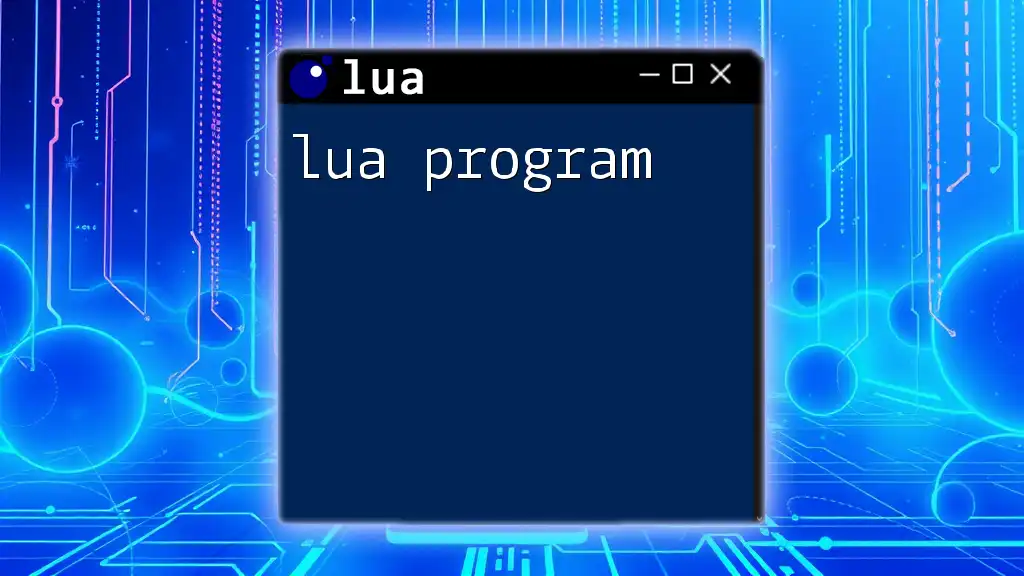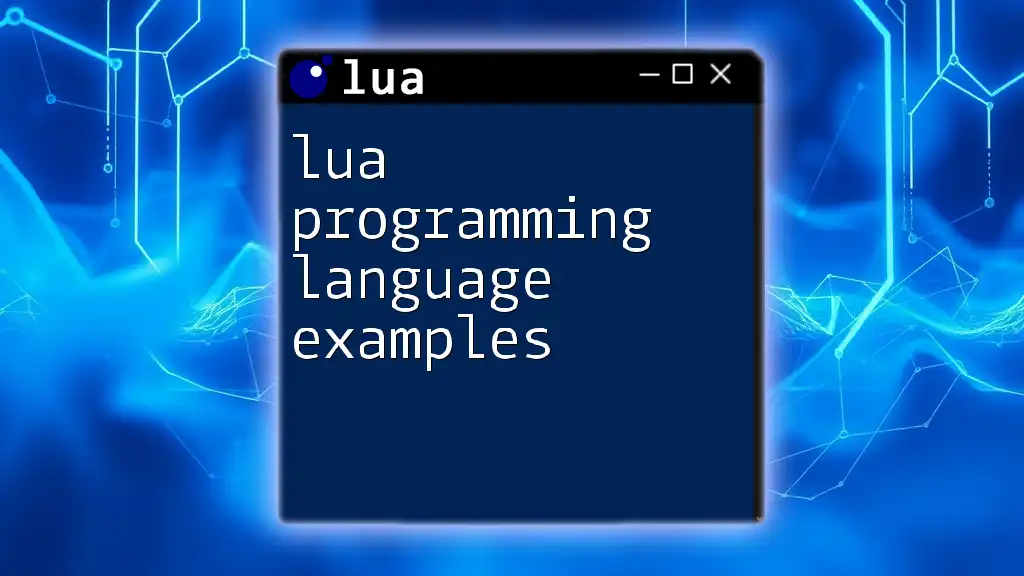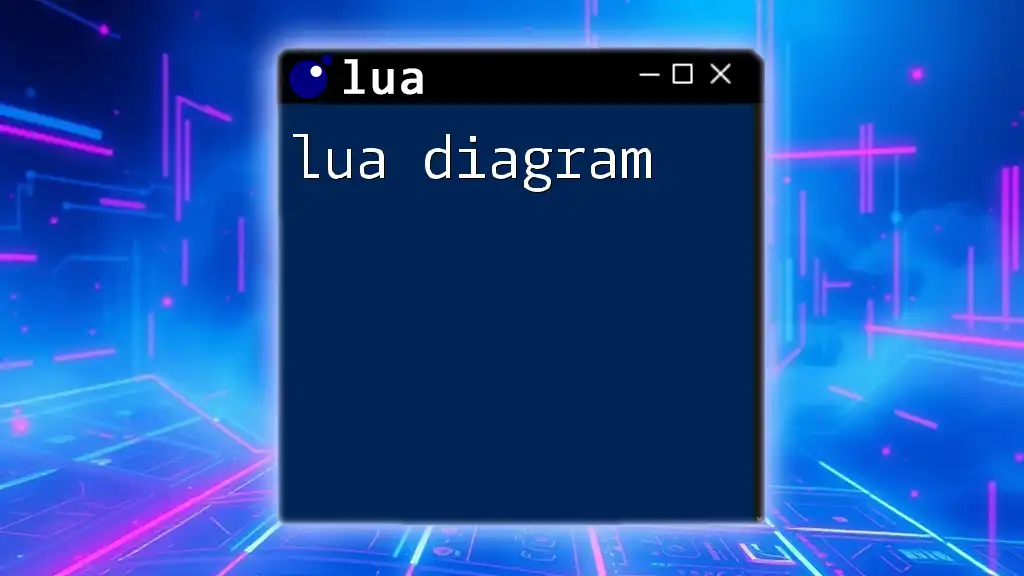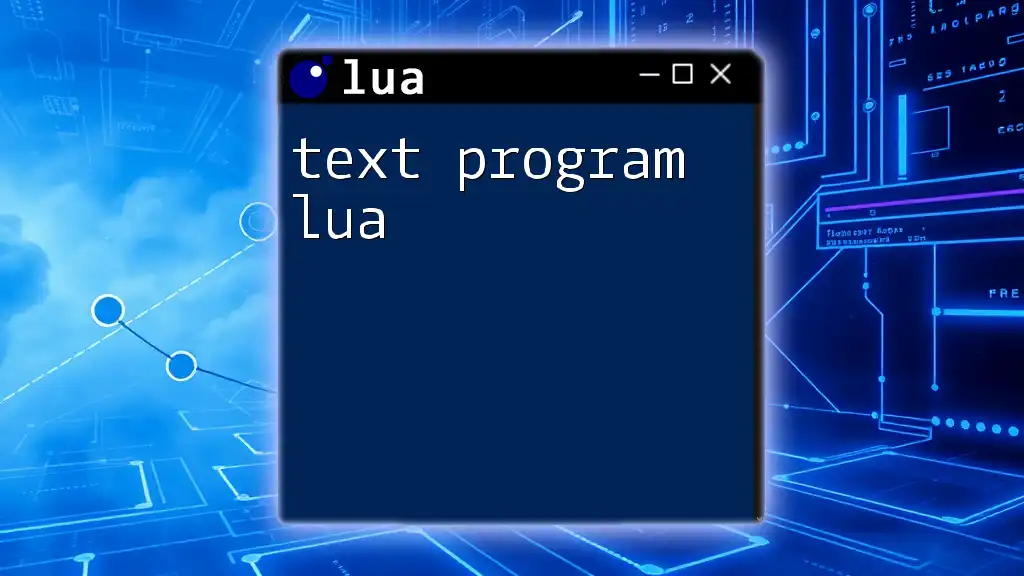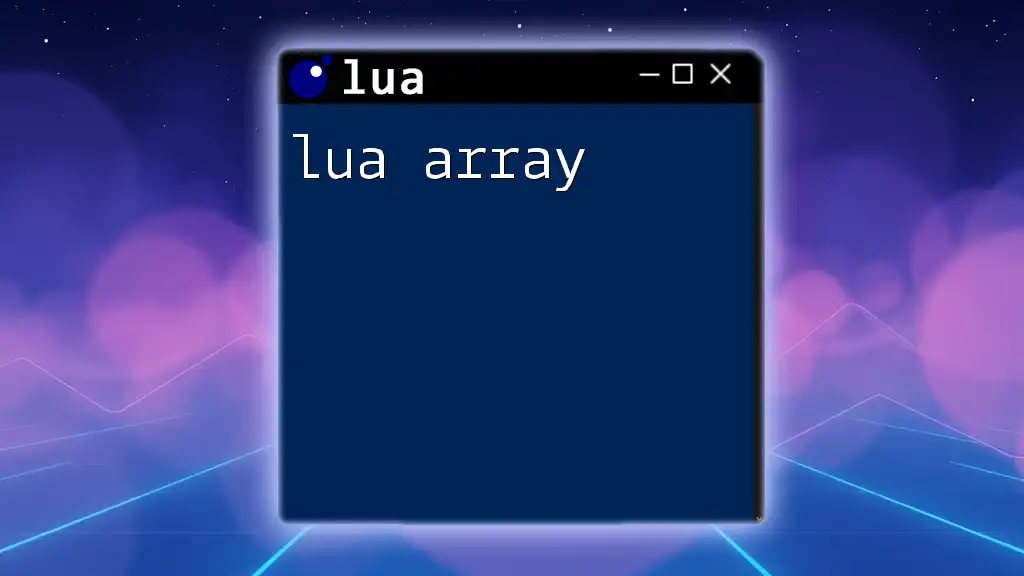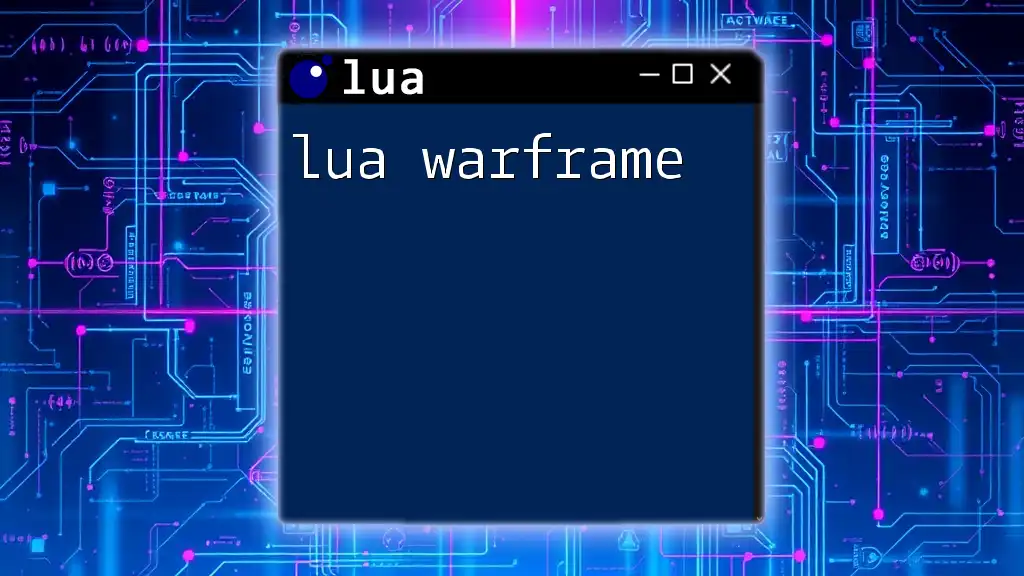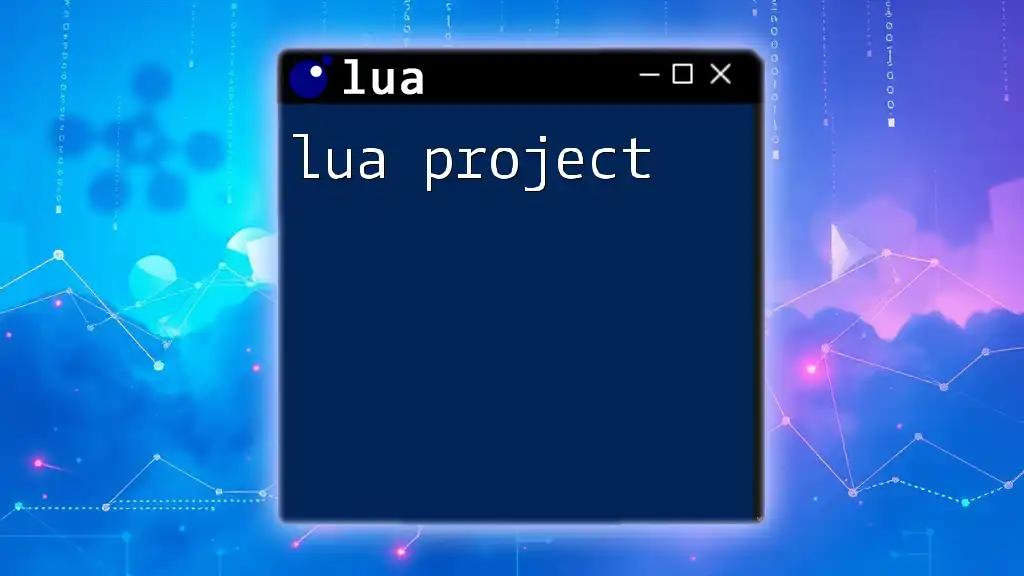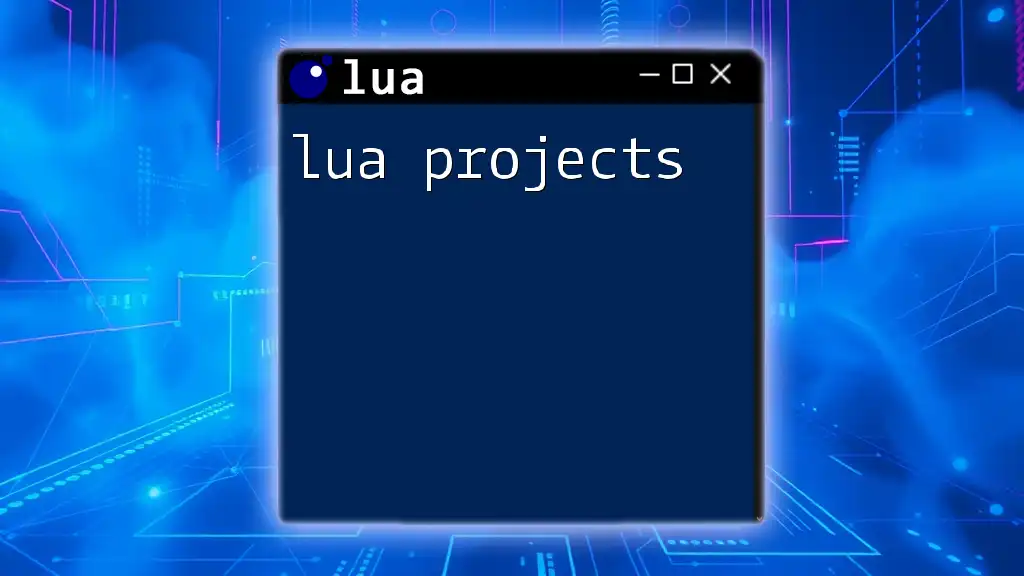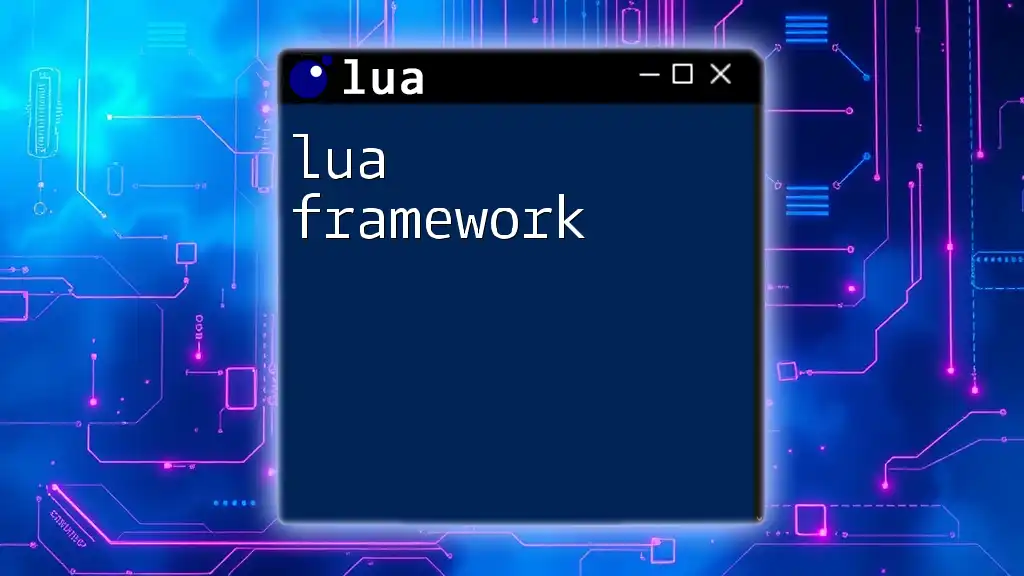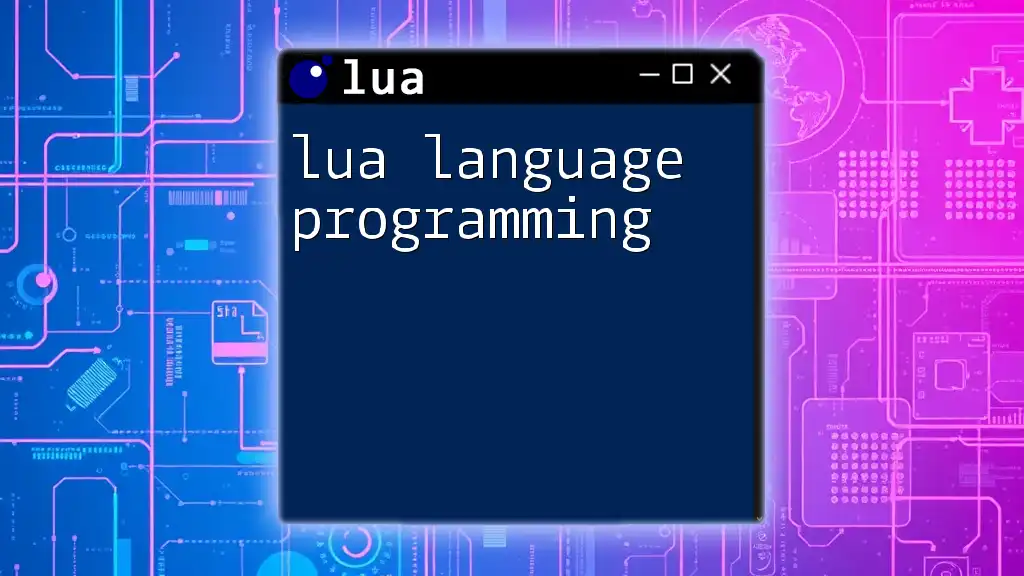A Lua program is a lightweight and efficient scripting language often used for embedded systems and game development, allowing users to create dynamic applications with ease.
Here’s a simple code snippet that demonstrates how to print "Hello, Lua!" in Lua:
print("Hello, Lua!")
What is Lua?
Background and History
Lua, developed at PUC-Rio, stands out as a lightweight, embeddable scripting language that has gained a substantial following since its creation in the early 1990s. Frequently leveraged in game development, embedded systems, and web applications, Lua has become synonymous with flexibility and performance.
Features of Lua
Lua is celebrated for several key characteristics:
-
Simplicity: The language employs a minimalistic syntax, making it easy to learn, especially for beginners. You can start writing effective scripts within a short timeframe.
-
Performance: Lua is renowned for its efficiency, allowing fast execution of scripts, which is crucial in performance-sensitive applications like video games.
-
Flexibility: Thanks to its extensible nature, Lua can integrate seamlessly into various applications, providing convenience for developers.
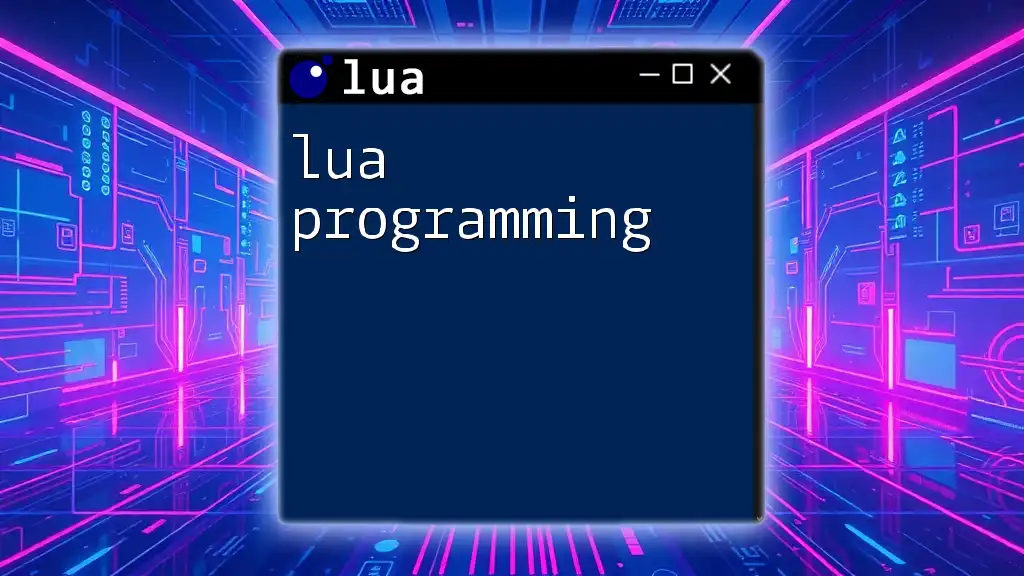
Getting Started with Lua
Setting Up Your Environment
To begin your journey in developing a Lua program, you first need to set up your environment. This involves:
-
Downloading the Lua Interpreter: Visit the official Lua website to download the interpreter compatible with your operating system.
-
Choosing an IDE: While you can use any text editor to write Lua scripts, IDEs such as ZeroBrane Studio offer features like debugging and syntax highlighting that can enhance your coding experience.
Your First Lua Program
Writing a Simple Lua Script
To familiarize yourself with Lua, let’s write your first script that simply prints a message to the console:
print("Hello, World!")
This straightforward command introduces you to the core functionality of Lua: outputting text. The `print` function is built-in, showcasing how easily you can interact with the console.
Running Lua Programs
Once you've written your Lua script, the next step is to execute it. Here's how:
-
Command Line: Open your terminal and navigate to the directory of your Lua file. Type `lua your_script_name.lua` to run your script directly from the command line.
-
Using an IDE: If you’re using an IDE like ZeroBrane Studio, simply press the run button, and it will execute your Lua program, displaying the output in the console pane.
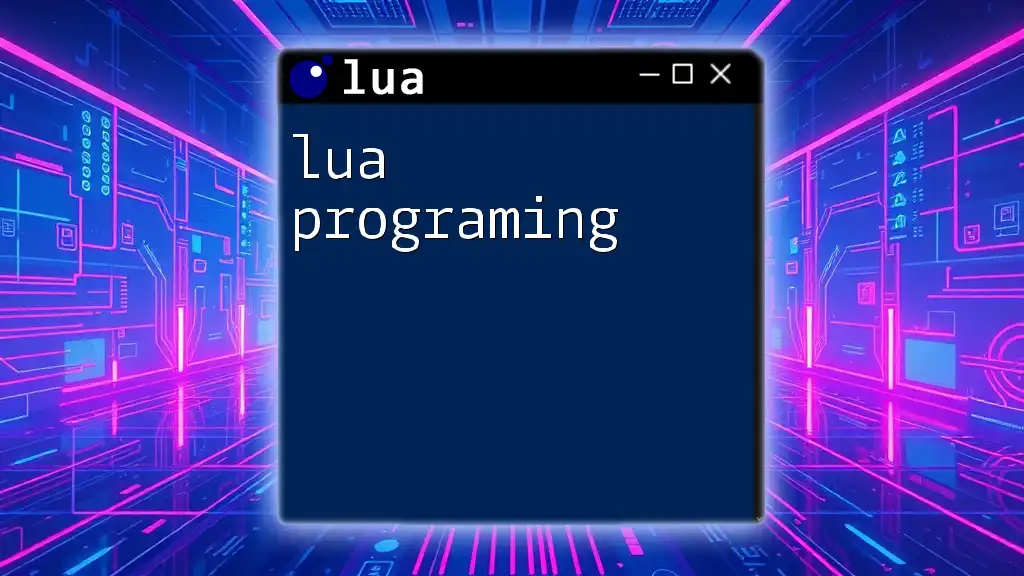
Core Concepts in Lua Programming
Variables and Data Types
Introduction to Variables
Variables in Lua serve as storage containers for data. Understanding their use is vital for writing effective Lua programs. In Lua, variables are dynamically typed, meaning that you don't need to declare their type explicitly.
Data Types in Lua
Lua supports several data types:
-
Nil: Represents the absence of a value. For example:
local noValue = nil -
Numbers: Lua utilizes both integer and float numbers. You can perform arithmetic operations just as you would in mathematics:
local sum = 5 + 2.5 -
Strings: Strings in Lua are easy to manipulate. You can concatenate strings using the `..` operator:
local name = "Lua" print("Welcome to " .. name) -
Booleans: These represent true and false values, crucial for flow control in your scripts.
Control Structures
Conditional Statements
Conditional statements in Lua allow your program to make decisions based on certain conditions. The `if...then...else` statement is fundamental:
local age = 20
if age >= 18 then
print("Adult")
else
print("Minor")
end
In this example, Lua evaluates the age variable to determine the output, demonstrating basic decision-making capabilities.
Loops
Loops enable repetitive execution of code blocks, enhancing program efficiency:
- for Loops: The `for` loop structure allows you to repeat a block of code a specific number of times:
for i = 1, 5 do
print(i)
end
This loop prints numbers 1 through 5 to the console.
- while Loops: The `while` loop continues executing as long as a condition is true, offering flexibility based on runtime conditions:
local i = 1
while i <= 5 do
print(i)
i = i + 1
end
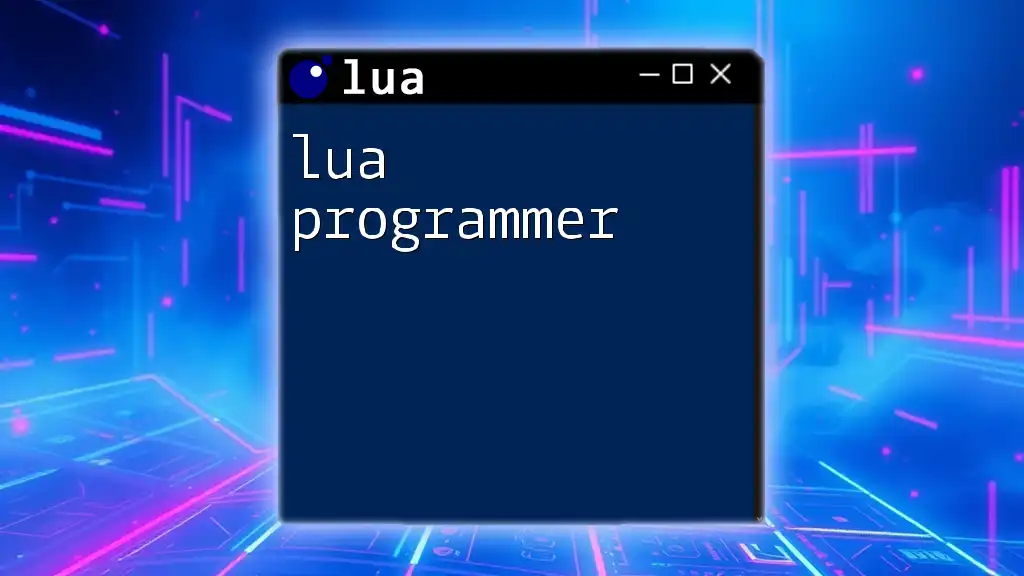
Functions in Lua
Defining and Calling Functions
Functions encapsulate reusable code blocks. You define a function in Lua using the `function` keyword:
function greet(name)
return "Hello, " .. name
end
print(greet("World"))
Here, the function `greet` accepts a parameter, making it versatile for various inputs.
Function Parameters and Return Values
Functions can accept multiple parameters, enhancing their functionality. Additionally, they can return values, enabling complex operations. Returning values from functions allows for direct interaction with other parts of your program.
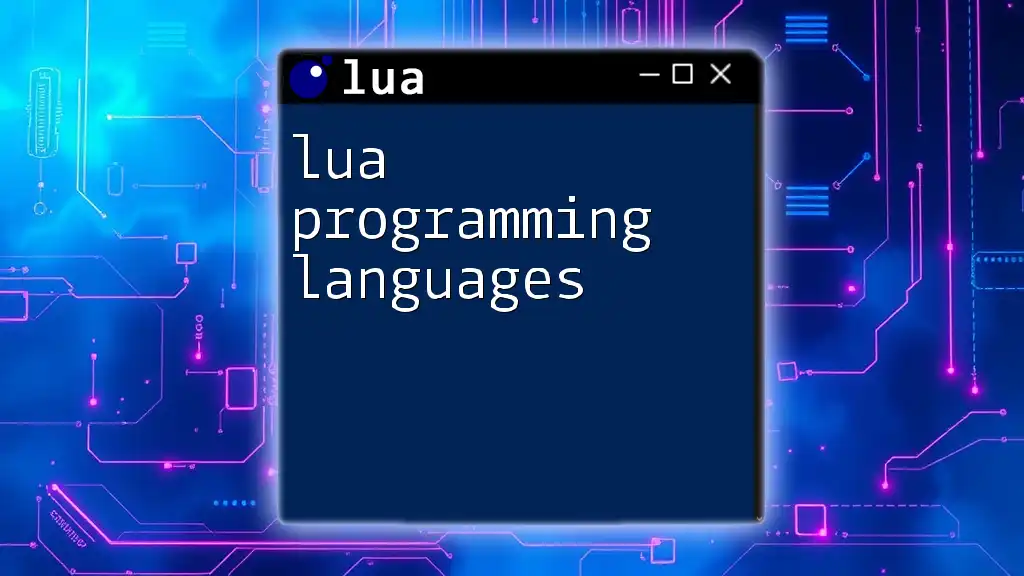
Tables: The Heart of Lua Programming
What are Tables?
Tables in Lua are significantly versatile, serving as the primary data structure. They can work as arrays, dictionaries, and more. Creating a table is straightforward:
local myTable = {}
This creates an empty table that you can populate with data.
Use Cases for Tables
Array Tables
Lua's array tables allow you to store ordered collections:
local fruits = {"apple", "banana", "cherry"}
print(fruits[1]) -- Outputs: apple
Each item in the table can be accessed via its index.
Dictionary Tables
Tables can also function as dictionaries, storing key-value pairs:
local person = {name = "John", age = 30}
print(person.name) -- Outputs: John
This structure is highly beneficial for organizing data meaningfully.
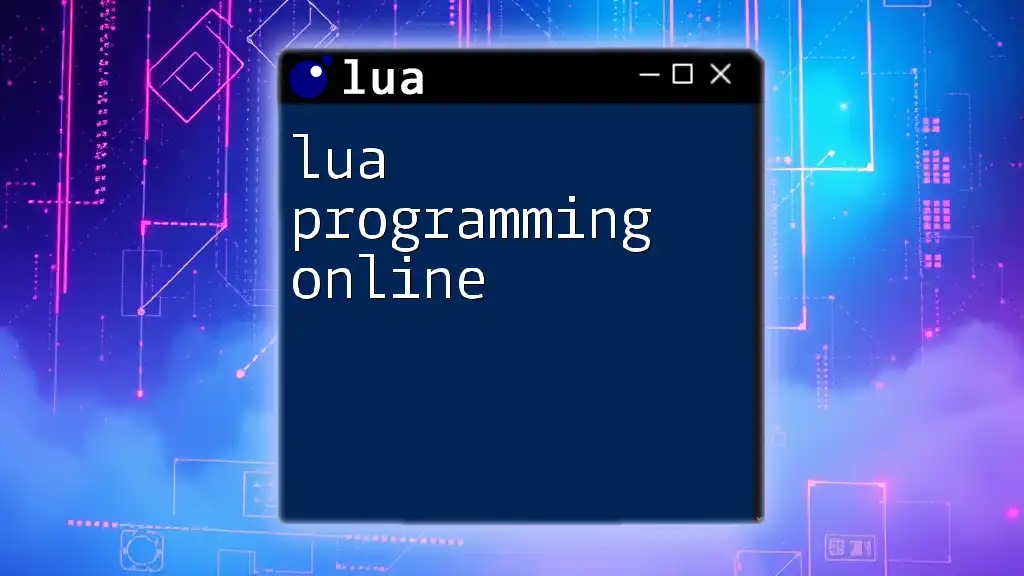
Debugging Lua Programs
Common Errors and Debugging Techniques
Understanding types of errors—syntax errors and runtime errors—is essential for effective debugging. Syntax errors arise from incorrect code structure, while runtime errors occur during execution. Familiarizing yourself with the debug library can greatly enhance your troubleshooting efforts.
Best Practices for Writing Clean Code
To ensure maintainability and readability in your Lua programs, adhere to best practices. Use consistent naming conventions for variables, write comments to clarify complex logic, and keep functions small and focused on specific tasks.
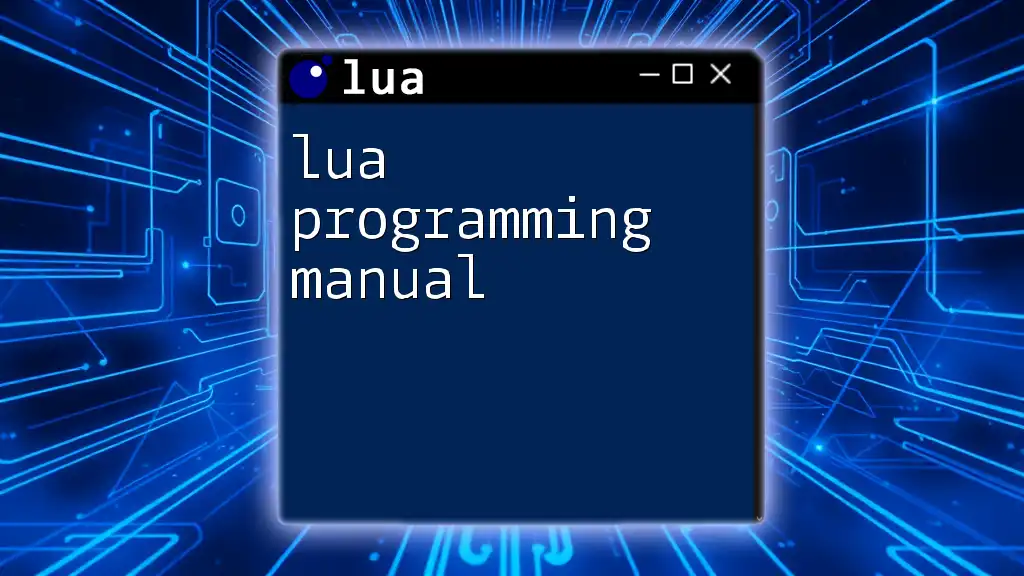
Conclusion
Learning to develop a Lua program opens doors to numerous applications ranging from game development to embedded programming. With its simplicity, performance, and flexibility, Lua provides an excellent platform for both newcomers and experienced developers. Incorporate the concepts discussed in this guide to start mastering Lua and enhancing your programming repertoire.
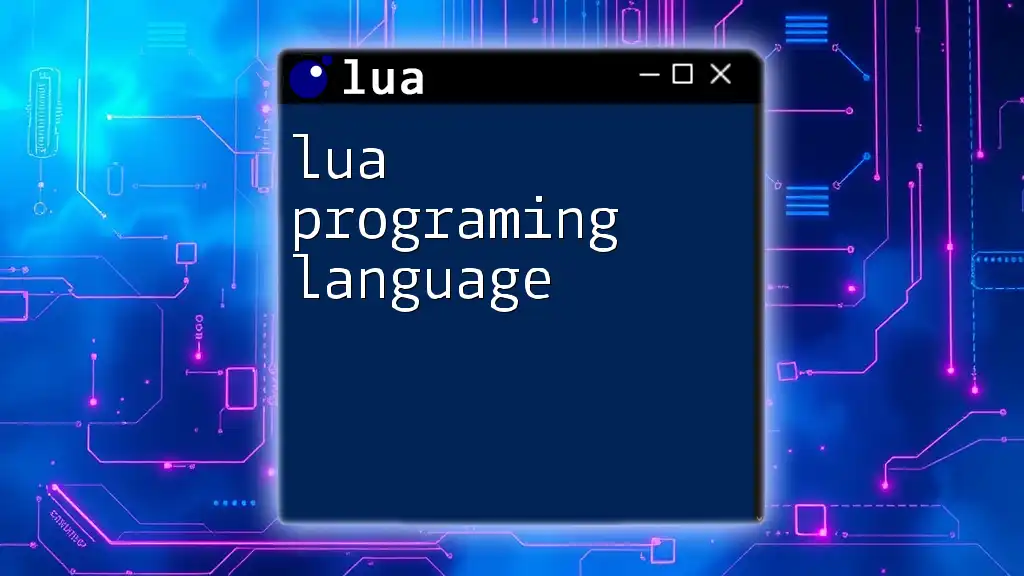
Additional Resources
For further exploration, check the official Lua documentation, recommended books, and online courses. Engaging with communities dedicated to Lua will also foster learning and support as you delve deeper into the language.

